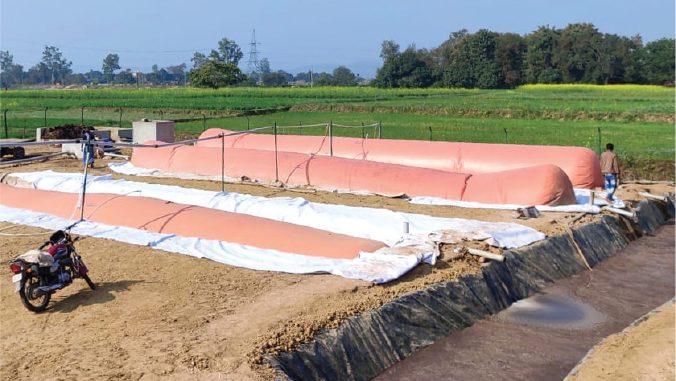
Grassroots Energy was co-founded in 2016 by Mateen Abdul, with rich experience in automobile and energy sector, along with Pradeep kumar Podal, who had worked in the renewable energy sector. Launched with a mission to use technology to end energy poverty in rural areas and enable soil-regeneration, the start-up company’s first project was a 30 kW solar-biogas minigrid, which was commissioned in 2017. Since then, the company has scaled up and it now operates six minigrids in Bihar. The energy generated from these minigrids is used for agro-based processing industries by micro-entrepreneurs, for clean drinking water RO plants, clean cooking, last-mile connectivity or additional income generating activities by farmers. While these consumers pay around Rs 12 per unit from the electricity generated from these minigrids, it is in fact the only option for them as low quality power when available is not compatible with electric motors used by micro-enterprises.
Most of the minigrids in remote villages are solar-diesel based. Meanwhile, hybridisation of distributed solar and bio-CNG is not only a sustainable solution but also solves the challenges of intermittency and increases the scope of providing tailored services to consumers. “The harnessing of bio-CNG is a game changer for the bioenergy sector as it has methane content of over 90 per cent and is a substitute of natural gas. It also has a similar calorific value of diesel,” says Abdul.
Funding and growth strategy
In 2016, Grassroots Energy received an award from the Indo-US PACE Setter Fund for its innovative technology in setting up the project. In the past, it has raised grants from the DOEN Foundation as well. Currently, it is in talks for raising commercial capital from a few large institutional investors including DEON Foundation. Cumulatively, it has raised over $900,000 till date and plans to raise $2.5 million in the next two years. With these funds, it plans to install over 50 minigrids across Bihar in the next three years.
Future outlook of small-scale bio-CNG segment
The setting up of large-scale bioenergy plants in India has many challenges. High capital expenditure is the foremost issue, which, combined with the challenges in ensuring a reliable supply of large amounts of feedstock, is the reason why it is hard to replicate large-scale bioenergy plants across the country. Alternatively, distributed small-scale bioenergy plants, facing less of these issues, can be replicated across the country. The supply chain management of the raw material is another daunting task for large-scale bioenergy projects. These challenges are mitigated to a certain extent in the distributed-scale segment. According to Abdul, “The transportation of low-density biomass is a major cost of operations. Decentralised systems located at farmgate can convert low value agricultural waste to high value fuels like bio-CNG which improves project viability. On an average, we pay farmers Rs 300-Rs 600 per tonne depending on the location.” However, uncertainty over the monetisation of fertilisers, a residue of the bio-CNG plants, remains a stress point for operators of both large- and small-scale bioenergy plants as the economics of the plant makes commercial sense only when enough revenue is generated from this residue sale. Fortunately, Grassroots Energy is able to solve this stress point. As Abdul says, “The sale of fertiliser is a significant portion of our revenue. We produce high quality solid and liquid organic manure, which is sold to about 5,000 farmers. The liquid fertiliser is sold at Rs 70 per litre, while the solid manure is sold at Rs 5 per kg.”
With the purchase of agricultural waste from farmers and the sale of electricity and manure back to them, Grassroots Energy is able to create a circular economy of sorts at a small scale in the villages of Bihar. Despite the benefits of small-scale distributed bio-CNG plants, the inability to work with multiple feedstocks often prevents the segment to grow to its full potential and enter more remote areas of the country. This is one reason why bioenergy-based minigrids are less than 3 per cent of the entire minigrids set up in the country. Despite the dismal statistics, Abdul is optimistic about the growth potential. He says, “The potential investments in the biofuels sector will reach around $15 billion by 2030 in India. There have been positive discussions regarding priority sector lending and easing the GST regime, which puts our start-up in a strong position.” Such positive developments, if executed, will indeed help Grassroots Energy grow exponentially across the country.
By Sarthak Takyar
